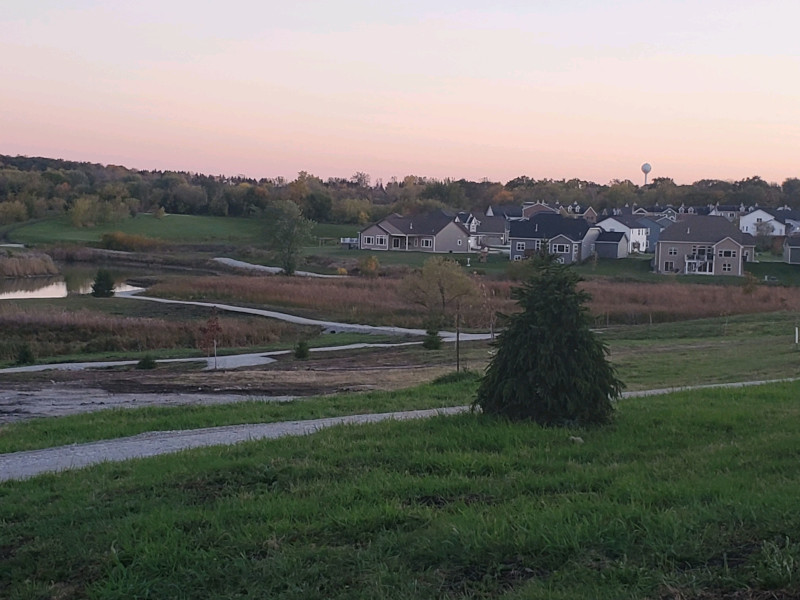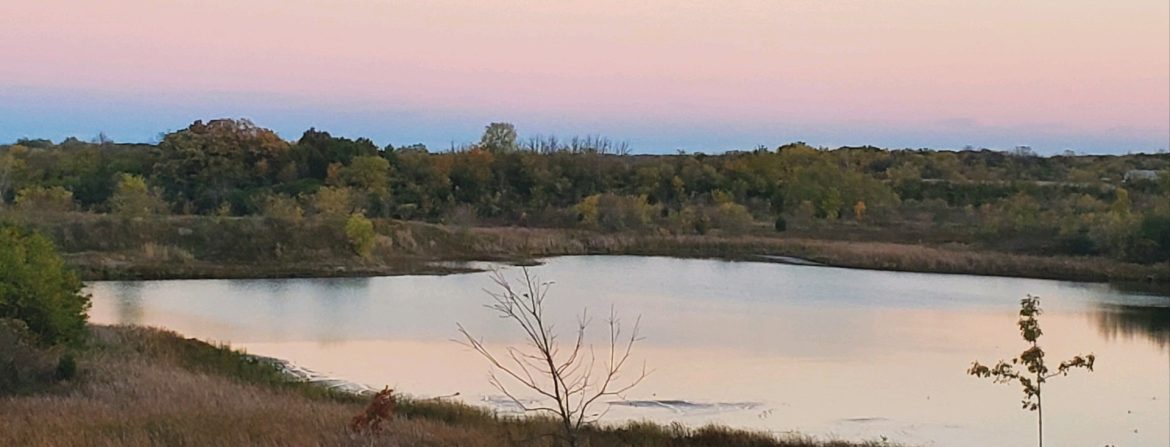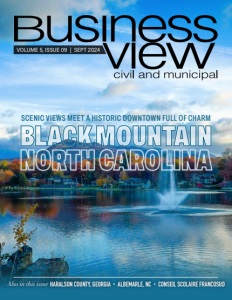Bristol, Wisconsin
A Village Balancing Growth and Resident Need
Shaping its future as a thriving community ready for sustainable growth through strategic planning, robust infrastructure
Bristol, Wisconsin, located just south of the bustling metropolitan area of Milwaukee and west of Kenosha, offers a quiet charm that balances rural serenity with modest, thoughtful growth. The village, with a population hovering around 5,200, holds a unique character—one that is deeply rooted in its controlled development and community involvement.
Village Administrator Randy Kerkman knows Bristol better than most. With nearly three decades of involvement in shaping its trajectory, he emphasizes the village’s careful adherence to its long-standing land use plan. “We’ve been working with this land use plan for close to 30 years,” he explains. “It’s not just a document that sits on a shelf. We actively use it to guide development and preserve what makes Bristol special.”
Kerkman quickly points out that the plan isn’t stagnant; it’s been molded by residents’ input over time, ensuring that growth aligns with the community’s values. “People have had a say in it,” he says, emphasizing the village’s inclusive approach to planning. This, he believes, is one of the reasons why there’s general contentment among Bristol’s residents. “The people that understand our land use plan and how we work with it…they’re happy with it,” he remarks confidently.
Bristol’s approach to development is as much about what doesn’t change as it is about what does. Certain areas are earmarked for expansion, while others are deliberately left untouched. “There are areas planned for development, and there are areas that are not,” Kerkman says, his voice carrying the steady assurance of someone who knows exactly where Bristol is headed. The focus remains on balance—growth without compromising the rural essence that residents cherish.
Investing in Bristol’s Future
As Bristol steadily moves forward, its leadership has pinpointed several critical infrastructure projects to ensure the village remains livable and forward-thinking. The planned projects reflect a long-term vision for sustainable growth and a commitment to keeping pace with the demands of modern life.
“The next big thing is a new water tower,” Mike Farrell, Village President, says. His words carry the weight of the project’s importance. “And water towers are expensive. Millions and millions of dollars will go into that infrastructure.” Despite the cost, he is clear-eyed about its necessity. It’s not just a matter of improving capacity; it’s a crucial investment for the community’s future needs. “It’s something that we need to do for this community,” he adds, firmly stating that while the price tag is high, “it is the right thing to do.” There’s no hesitation—Bristol will make the investment.
Another area where the village is taking decisive action is broadband internet access. As remote work and hybrid models have become more prevalent, reliable high-speed internet is no longer just a luxury; it’s essential. Kerkman explains that the village has been working closely with the county to address this need. “We’ve been meeting with the county—it’s called the broadband coalition or initiative,” he shares, indicating that Bristol is part of a broader effort to ensure all areas have adequate access.
Envisioning a New Center
Though Bristol may not have the bustling downtown atmosphere of a larger city, its rural charm is undeniably one of its defining traits. However, the village’s leadership is set on creating a central hub to serve as a focal point for residents and visitors, blending practicality with community enhancement.
“There’s very limited downtown atmosphere, if you want to call it that,” Farrell admits. “It is a very rural community, a very natural community.” That rural character is part of Bristol’s appeal, but it doesn’t mean the village lacks ambition when it comes to future planning. Farrell describes plans for a new village center—a potential centerpiece for the community that would go beyond just aesthetics. “The village owns land where we hope to locate a new village center type of structure, whether it’s retail, it may include a new municipal building,” he shares.
The plan for this new hub extends beyond municipal buildings and retail. As Farrell outlines, it will tie into the broader expansion of Bristol’s recreational spaces. “Around that, as Randy mentioned, Parks and Recreation will be built,” he says. The idea is to seamlessly blend practical infrastructure with places that encourage community gathering and outdoor activity, reinforcing Bristol’s emphasis on quality of life.
Bristol’s Booming Growth
Bristol is rapidly evolving, earning recognition for its impressive expansion and forward momentum. In recent years, the village has become one of the fastest-growing communities in the area—a distinction that Village Administrator Kerkman proudly points out. “In 2023, we were the fastest growing community in Kenosha County,” he states. “And depending on the metric, we were ranked fifth or eighth fastest in Wisconsin by assessed value.”
As Bristol grows, its strategic location between two major metropolitan areas—Milwaukee and Chicago—has also become a significant asset, drawing businesses looking for prime real estate in the heart of the Midwest. “The corridor for Bristol is between Milwaukee and Chicago,” Farrell explains, pointing out how this geography makes the village an attractive business spot.
Transportation infrastructure is pivotal in Bristol’s appeal, particularly for warehousing and logistics companies. Farrell highlights the industrial park’s strategic position along two highways that provide quick access to I-94, one of the most significant interstate highways in the region. “If you can build a warehouse facility less than a mile away from an interstate, well, that is certainly desirable from a developer point of view,” he notes.

Expanding Residential and Recreational Spaces
As Bristol continues to expand its commercial base, the village is keenly aware of the need to accommodate the influx of new residents. Residential projects are moving forward rapidly, with a major development set to add over 200 units to the community.
Farrell elaborates on the scale of the project, noting that it will offer a mix of single-family homes and multi-family buildings strategically located close to I-94. “It’s only about a mile away from the interstate,” he says, pointing out the location’s convenience for future residents and the growing workforce the village needs to support its expanding business parks.
As Farrell explains, the demand for housing goes hand in hand with the village’s commercial development. “As we build our business parks and industrial parks, we need people to fill the jobs in those places. And so we do need housing. There’s no question about it.” Bristol isn’t just focusing on general housing needs; there’s also a strong emphasis on senior living facilities. Farrell is a vocal advocate for this type of development. “I favor senior housing when we can get it because that’s needed as well,” he says, highlighting the importance of creating a balanced, inclusive community that caters to various age groups.
The village is working closely with developers who understand the importance of affordability, and Farrell notes that they are capitalizing on state incentives aimed at workforce housing. “Our developer is very sensitive to the idea of building affordable housing,” he explains, adding that these initiatives are crucial for ensuring that job opportunities match the influx of new residents.
Health and Education: Anchoring Bristol’s Well-being
In Bristol, access to quality education and health care forms the backbone of the village’s appeal to families and individuals. With solid infrastructure in both sectors, the community enjoys resources that are often challenging for more rural areas.
Farrell speaks with pride about the local school system. “We have a K through eight school district, and it’s a single school complex,” he explains. Despite its small size, the school consistently ranks high in statewide testing and evaluations. High school students attend a nearby district outside the village limits, but it is also highly regarded. “We’re very fortunate to have good education elements here,” Farrell notes, reflecting the importance Bristol places on providing substantial educational opportunities for its younger residents.
Health care is another area where Bristol’s location works in its favor. According to Kerkman, residents have access to three major hospitals within a five-mile radius. “They offer any type of health care needed, and it’s all fairly close,” he explains, pointing out that this proximity ensures that residents don’t have to travel far for advanced medical care.
Despite the rural setting, Farrell feels that Bristol’s connection to these large hospital systems mitigates potential difficulties in attracting specialized doctors. “The hospital systems that exist here are part of much, much larger systems,” he says, emphasizing how this scale helps overcome the typical challenges rural communities face in recruiting medical professionals. With access to cutting-edge facilities and a vast network of providers, residents of Bristol benefit from the resources often reserved for larger urban areas, all while enjoying the comfort and charm of their smaller village.
Bristol’s Next Chapter of Growth
As Bristol continues its steady upward trajectory, village leaders are already looking toward the future with clear priorities and an optimistic outlook. Kerkman outlines the village’s top priorities for 2025 and beyond.
“Continuing on our two TID districts that are bringing warehousing and industrial into the community is a big focus,” he says. Recent discussions with developers indicate that two, possibly three, new buildings could be under construction next year. This steady industrial growth is complemented by the influx of new residential projects, particularly in the Highway 50 area, where the Leo Group’s development is sparking further interest.
“Housing is needed terribly,” Kerkman admits, pointing to the heightened activity in the area as a promising sign that more developments are on the way. He hints at ongoing negotiations for larger apartment buildings that could start construction as early as next year. “I’m hoping those negotiations will close before the end of the year,” he adds, confident that Bristol’s momentum will carry these projects forward.
Farrell also has an eye on the future, projecting substantial population growth in the next decade. “If I had to guess what the population of Bristol will be five to ten years from now, I would envision a 20% increase,” he predicts. His confidence is rooted in the village’s ongoing efforts to create a balanced environment where jobs and housing are both plentiful.
“For all the reasons that we’ve mentioned here today—availability of jobs, and then more availability of housing—that’s going to bring population,” Farrell explains. Bristol’s leaders aren’t just anticipating growth but actively preparing for it. “I think we’re ready for that, and we’re encouraging it,” Farrell concludes, as Bristol looks forward to a future where opportunity and community go hand in hand.
AT A GLANCE
Village of Bristol
What: A rapidly growing village focused on strategic industrial, residential, and community development
Where: Bristol, Wisconsin
Website: https://villageofbristol.org/







